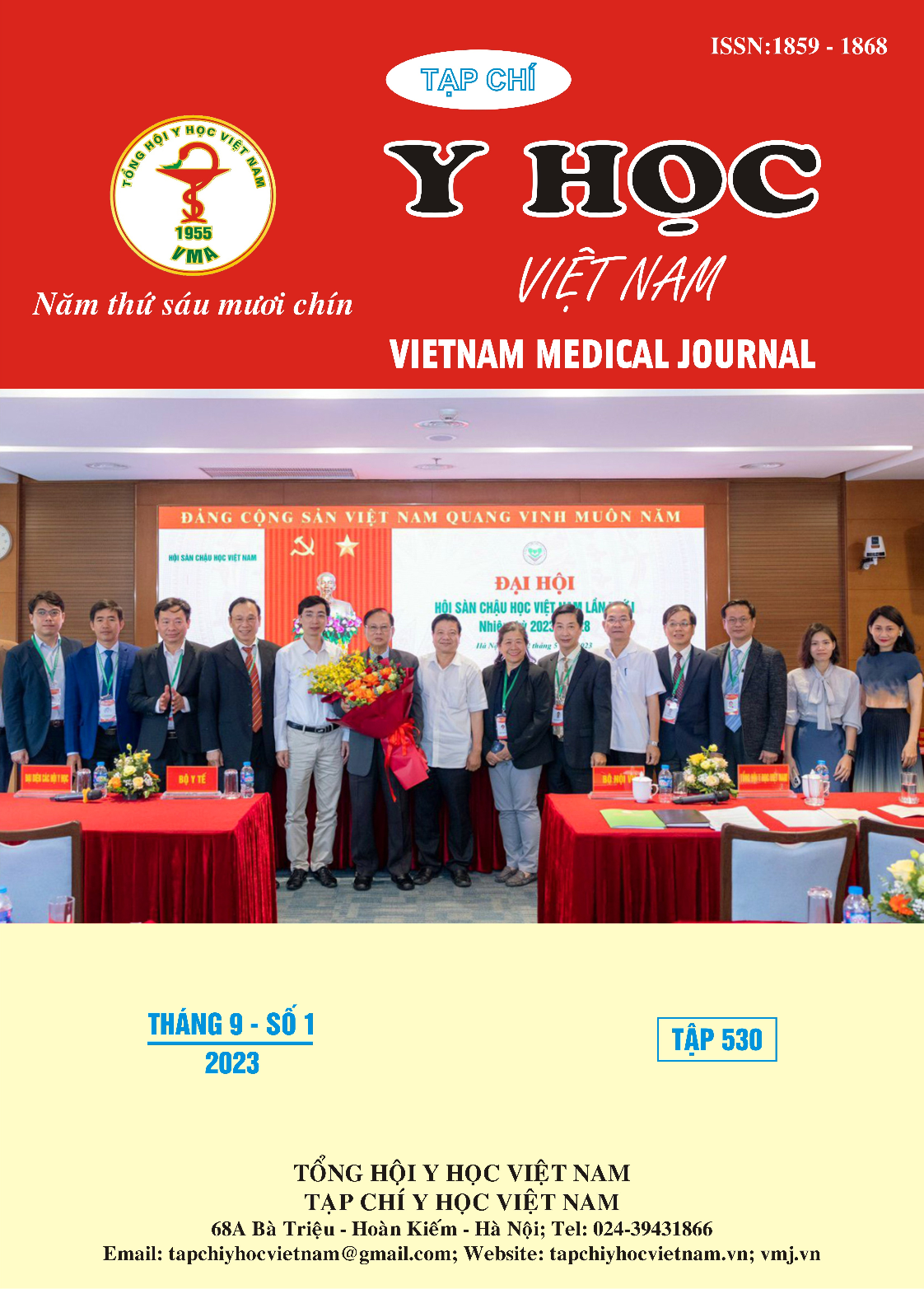CLINICAL CHARACTERISTICS OF AUTISM SPECTRUM DISORDERS IN CHILDREN FROM 24 TO 60 MONTHS OF AGE IN TUYEN QUANG
Main Article Content
Abstract
Objectives: To describe clinical features of autism spectrum disorder in children aged 24 to 60 months at Huong Sen Rehabilitation Hospital, Tuyen Quang. Subjects and methods: A descriptive study was conducted on 60 children aged 24 to 60 months with an autism spectrum disorder in Tuyen Quang, from 2022 to 2023. Autism was diagnosed according to DSM-IV criteria and level classification on the Autism Rating Scale (CARS). Results: Autism is more common in boys, male/female ratio: 3.6/1; Children with severe autism accounted for a high rate (91.7%). The most common clinical manifestations in children with autism are no/little interest, sharing affection with parents/relatives (91.7%), pulling relatives' hands to grab objects as a tool (90, 0%); speech-language retardation for age (98.3%); reduced/no eye-to-eye contact (98.3%), stereotypical, stereotyped behavior (85%); likes to hug, hold tight (21.7%), eat without chewing, swallow (21.7%), challenging to get to sleep (65.0%). Most of the clinical symptoms of the 2 age groups 24-35 months and 36-60 months are not different (p>0.05), symptoms are quite stable at the age from 24 to 60 months. Conclusion: The typical clinical manifestations of children with autism spectrum disorder appear with high frequency (> 80%). The group of young children aged 24-35 months showed typical clinical signs of autism similar to those of the 36-60 month group, allowing an early diagnosis in this age period.
Article Details
Keywords
Autism, clinical, social interaction, language, behavior.
References
2. Trần Thiện Thắng và cộng sự (2022), "Đặc điểm lâm sàng rối loạn phổ tự kỷ từ 24 - 72 tháng tại thành phố Cần Thơ", Tạp chí Nghiên cứu Y học, tập 150 (2).
3. Lê Thị Kim Dung (2020), "Đặc điểm lâm sàng trẻ mắc rối loạn tự kỷ tại Thái Nguyên", Tạp chí Y học thực hành, tập 1131 (4).
4. Nguyễn Minh Phương (2021), "Khảo sát tỉ lệ trẻ từ 18-36 tháng có biểu hiện rối loạn phổ tự kỷ bằng thang điểm M- Chat tại trường mầm non ở thành phố Cà Mau 2020", Tạp chí Y học Việt Nam, tập 502 (1).
5. Lê Thị Vui (2020), "Dịch tễ học rối loạn phổ tự kỷ ở trẻ 18-30 tháng và rào cản tiếp cận dịch vụ chẩn đoán, can thiệp rối loạn phổ tự kỷ tại Việt Nam 2017-2020", Luận án tiến sĩ Y tế công cộng, Trường Đại học Y tế công cộng.
6. Smith I.M. Peverill S, Duku E. et al. (2019), "Developmental Trajectories of Feeding Problems in Children with Autism Spectrum Disorder, Journal Pediatr Psychol, Vol. 44 (8).
7. Maria G. P. et al. (2021), "Subjective and Electroencephalographic Sleep Parameters in Children and Adolescents with Autism Spectrum Disorder: A Systematic Review", Journal of Medicine, Vol. 3893 (10).
8. Aldosari M. A. F. et al. (2019), "Prevalence and correlates of autism spectrum disorder in Qatar: a national study", Journal of Child Psychology and Psychiatry, Vol. 60 (12).


